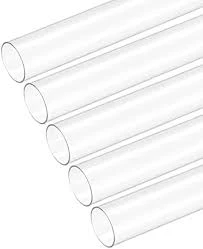dec . 12, 2024 00:20 Back to list
Understanding the Basics of PVC Pipe Connections and Installation Techniques
Understanding PVC Connection Pipes A Comprehensive Guide
Polyvinyl chloride (PVC) connection pipes have become a pivotal ingredient in modern plumbing, drainage, and construction projects. Their versatility, durability, and cost-effectiveness make them a popular choice for both residential and commercial applications. This article delves into the characteristics, benefits, installation techniques, and maintenance of PVC connection pipes.
Characteristics of PVC Connection Pipes
PVC is a synthetic plastic polymer that is widely used due to its excellent chemical resistance and physical properties. PVC connection pipes are manufactured in various diameters and lengths, catering to an array of applications, from water supply systems to drainage solutions. These pipes are lightweight compared to metal alternatives, making them easier to handle and transport.
One of the most notable characteristics of PVC pipes is their resistance to corrosion and chemical degradation. Unlike metal pipes, which can rust over time due to exposure to moisture and various chemicals, PVC pipes maintain their integrity and performance, even in harsh environments. This property not only extends the lifespan of the piping system but also reduces maintenance costs. Additionally, PVC pipes have a smooth interior surface, which minimizes friction and allows for efficient water flow, thus reducing energy costs associated with pumping.
Benefits of PVC Connection Pipes
The benefits of using PVC connection pipes are numerous and significant. Firstly, their cost-effectiveness is a primary reason for their prevalence in the industry. The production process of PVC is less expensive than that of metals, and their longevity results in reduced replacement costs over time. Furthermore, their lightweight nature reduces transportation and installation costs.
Secondly, PVC connection pipes contribute to environmental sustainability. They are 100% recyclable, making them an eco-friendly option compared to other materials. As awareness of environmental concerns grows, more construction projects are opting for materials that align with green building practices.
Moreover, its versatility extends beyond just plumbing. PVC connection pipes can be used in various applications, including irrigation systems, electrical conduits, and even in the automotive industry. This adaptability makes them an indispensable resource across multiple sectors.
pvc connection pipe

Installation Techniques
Installing PVC connection pipes requires adherence to specific methods to ensure longevity and efficiency. Before installation, it’s crucial to properly measure and cut the pipes to the required lengths. The use of a pipe cutter is advisable, as it provides a clean cut that ensures proper sealing at the joints.
The connection method usually involves solvent welding, which creates a permanent bond between sections of pipe and fittings. This process involves applying a primer to the joints, followed by a solvent cement that fuses the PVC surfaces together. It’s essential to allow adequate curing time after application, as this ensures the bond is secure before the system is pressurized.
In some cases, mechanical fittings may be used. These require the use of clamps and rubber gaskets to create a watertight seal. While this method is often considered for applications where disassembly may be necessary in the future, the solvent welding method remains the industry standard for a robust and permanent connection.
Maintenance of PVC Connection Pipes
One of the significant advantages of PVC connection pipes is their low maintenance requirement. However, routine inspections are vital to ensure the system's optimal performance. Homeowners should regularly check for leaks, joint integrity, and any signs of damage or discoloration that may signal issues.
Flushing the system periodically is also recommended to prevent buildup that could hinder water flow. In scenarios where pipes are exposed to sunlight, using protective coatings can prevent UV degradation, extending the lifespan of the piping system.
Conclusion
PVC connection pipes stand out as a leading choice in the plumbing and construction industries. Their unique properties, coupled with their cost-effectiveness and versatility, offer substantial benefits for a wide range of applications. Understanding how to properly install and maintain these pipes is essential for ensuring their longevity and efficiency. As the demand for efficient and sustainable solutions continues to rise, PVC connection pipes will undoubtedly remain a cornerstone of modern infrastructure. Whether you’re a homeowner, a contractor, or an engineer, utilizing PVC pipes can significantly enhance your projects' overall effectiveness and sustainability.
-
High-Quality HDPE Sheet | Durable Plastic Panels
NewsAug.06,2025
-
High-Precision PVC Rigid Sheets for Vacuum Forming | AI-Optimized
NewsAug.05,2025
-
Durable PVC-M Water Supply Pipes | 60-Year Life
NewsAug.04,2025
-
Premium HDPE Water Supply Pipes: Durable & Leak-Proof
NewsAug.03,2025
-
Premium PVC-M Water Supply Pipe - Durable & Efficient
NewsAug.02,2025
-
HDPE Drainage & Irrigation Pipe - Durable, Efficient Solutions
NewsAug.01,2025

